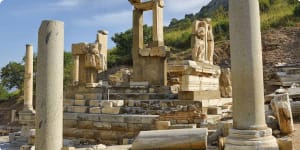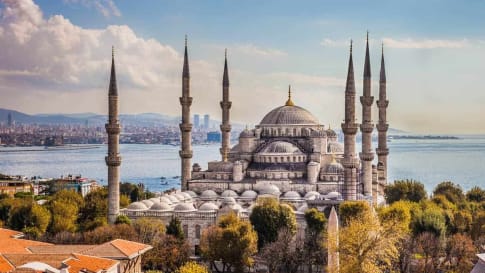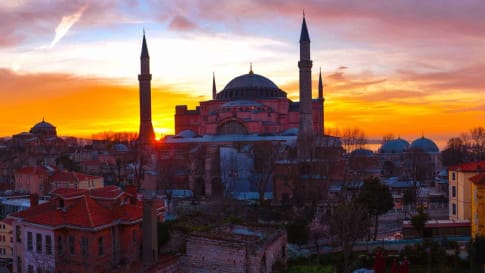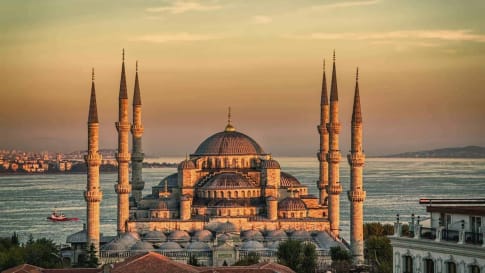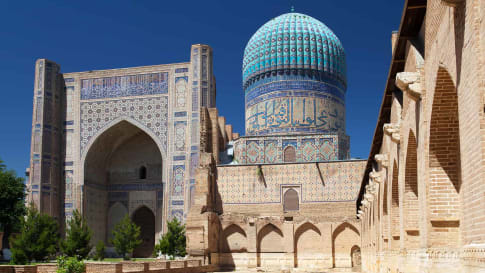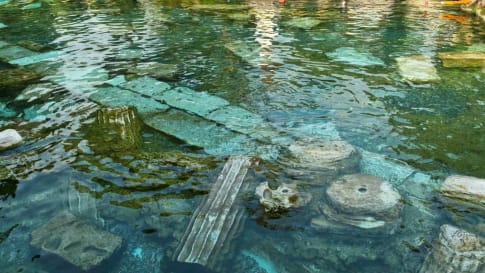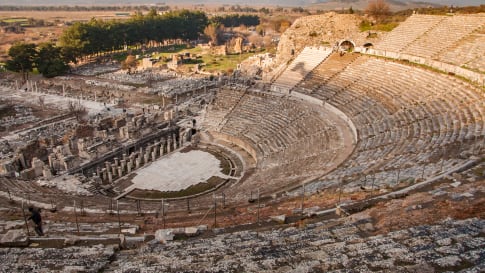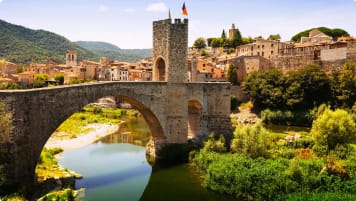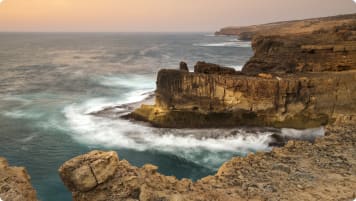Small group tour of Ancient Turkey
As a travel company we seek to keep guests off the beaten path. Trips that are remembered for authentic experiences. Our small group journeys in Turkey are fully escorted by an experienced local guide and an Odyssey guide to give this type of experience whether at one of the many UNESCO World heritage sites explored or local bazaars. It is always about the adventure and memories that we will create.
From A$17,295AUD

Highlights
- 1. Explore Istanbul, one of the world’s oldest and most intriguing cities.
- 2. Experience the dramatic landscape of Cappadocia, characterized by plateaus, valleys and fairy chimneys.
- 3. See the cascading, calcium-coated mineral baths of Pamukkale.
- 4. Enjoy Mediterranean boat cruise, departing from the old town marina in Antalya.
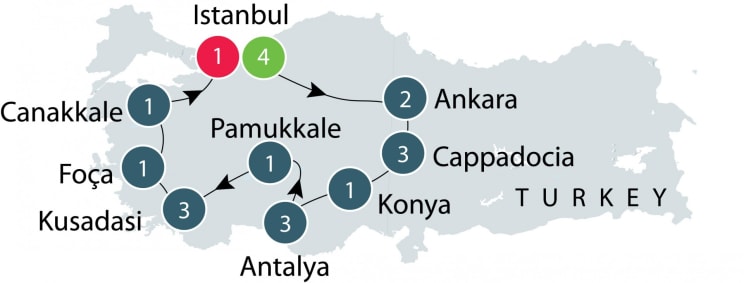
Departure Dates
| Departure Date | Price |
|---|---|
| 17 April 2025 Ends 07 May 2025 • 21 days A$17,295 Twin A$19,860 Single Guaranteed | Selected |
| 30 August 2025 Ends 19 September 2025 • 21 days A$17,295 Twin A$19,860 Single Available | |
| 16 April 2026 Ends 06 May 2026 • 21 days A$17,995 A$16,995 Twin A$20,250 A$19,250 Single Save up to $1000Early Bird | |
| 29 August 2026 Ends 18 September 2026 • 21 days A$17,995 Twin A$20,250 Single Available | |
| 10 April 2027 Ends 30 April 2027 • 21 days A$18,350 Twin A$20,500 Single Available | |
| 13 September 2027 Ends 03 October 2027 • 21 days A$18,350 Twin A$20,500 Single Available |
Small group tours Turkey | Ancient Turkey
Odyssey Traveller's Ancient Turkey escorted small group history tour visits some of the most spectacular, varied, and historically important sites in the ancient world. This Turkey tour begins and ends in Istanbul, Turkey's largest city and seaport, and the place where east meets the west on the Bosphorus strait. Visit Turkey with Odyssey on this amazing guided tour through the ancient world linking the Black sea, Egypt, Syria and Europe together on this history tour. Our tour packages are especially designed to be suitable for mature-aged and senior travellers, whether joining as a couple or as a solo traveller.
Over 21 days we will travel from Istanbul to Cappadocia, exploring and learning with our tour leader and tour guide about the ancient world through to the Ottoman empire and the power of the Ottoman Sultan in building some of the greatest monuments. On our Cappadocia tour we visit its ‘fairy chimneys’, large rock spires that rise from the earth like mushrooms, formed over millions of years by the erosion of volcanic rock. We go on a Pamukkale tour, see the ancient ruins of Ephesus and the mosques in Turkey , and view the Aegean Sea, with our terrific local guide sharing with you both the ancient and contemporary history and scenery of this incredibly diverse nation. The tour stops in nine key places that have played pivotal roles in the development of Turkey including the Gallipoli peninsula. Typically our Turkey travel group stop for more than one night in our destinations--1 to 4 nights of hotel stay or other type of accommodation before travelling to our next point of interest. A combination of day trip, city tour, shore excursions, and overnight trips, this Turkey tour promises to be a memorable trip and an amazing travel experience.
At the crossroads between Europe and Asia, Turkey’s fascinating history spans thousands of years and includes the history of both Anatolia (the Asian part of Turkey) and eastern Thrace (the European part of Turkey). It thus consists of a rich patchwork of overlapping eras, empires, and civilisations. Each civilisation has in turn left a plethora of monuments, ruins and lasting cultural legacies all contributing to the character of modern Turkey. Part of the Fertile Crescent, it was one of the first lands to witness the birth of agriculture, the domestication of animals, and the first settlement of several thousand people - at Çatalhöyük circa 6500 BCE. The land in ancient times was dominated by several Anatolian empires before the Greeks, Persians and Romans took hold throughout the classical era. In the middle ages it stood as the seat of the Byzantine Empire, but by the 11th century, Turkish nomads from Central Asia had moved through the region gradually conquering all of Asia Minor, ushering in the Seljuk and then the Ottoman Turkish Empires. Since the end of World War One and the fall of the Ottoman Empire, Turkey has transformed into the vibrant, modernizing, secular state it is today.
Small group tours Turkey Itinerary
The program's itinerary takes in many of the most famous sites and sights of the ancient world. Istanbul is one of the world's oldest cities and has been at the centre of civilisation for centuries. We visit a UNESCO World Heritage Site, the Blue Mosque , a beautiful structure built between 1609 and 1616 by Sultan Ahmed during the age of the Ottoman Empire to house his tomb. The Mosque features six spectacular minarets , the culmination of two centuries of the Ottoman empire committed to building this mosque. You will see the Greek theatres in Pergamon, the legendary Greco-Roman city of Ephesus.
We enjoy a cruise on the Bosphorus strait, viewing both the European and Asian shores of Istanbul. The Bosphorus strait is a beautiful and important waterway that has a long history, beginning at least as early as the 5th century BC, when in the ancient world, the city-state of Athens depended on it for grain imports from Scythia.
In Antalya we have some free time in to explore this old city and marina. You may want to stroll around exploring shops, cafes and restaurants, or walk down to the local beach for a dip in the Mediterranean Ocean. In Saralti, we visit its underground city. In Konya, we learn about the mystic Whirling Dervishes. Our Turkey small group tour also includes a visit to the extraordinary limestone formations of Pamukkale, as well as the underground city and cave churches on a Cappadocia tour. We also have the opportunity to interact with the locals, and experience first-hand their culture, cuisine, and traditions.
A large part of our Turkey small group tour program is spent in Anatolia, in eastern Turkey. This tour also spends time on the Gallipoli Peninsula and in Istanbul, the European part of the country known as Thrace. Our itinerary includes on this small group tour, a local English-speaking guide who will accompany us on our Turkey tour alongside your Odyssey Traveller tour manager (Program Leader). Accommodation during the program is in quality 4-5 star hotels.
For more details of our small group tours, click the ‘Top 5’ or ‘Itinerary’ buttons above! You can also explore our country profile on Turkey and read these articles about Istanbul and the places to visit in Turkey.
If you’re keen to experience this tour, please call or send an email. Or, to book, simply fill in the form on the right-hand side of this page.
Gallery
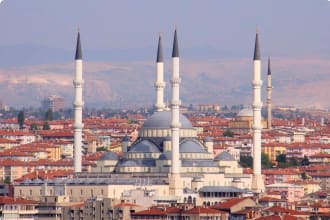
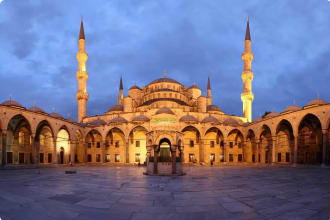
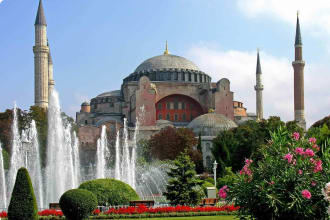
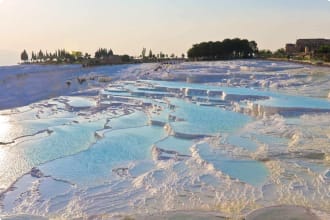
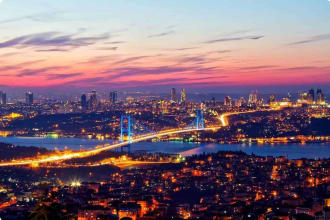
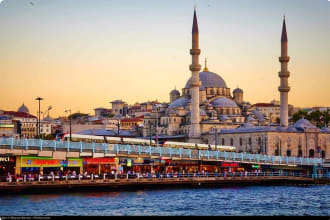
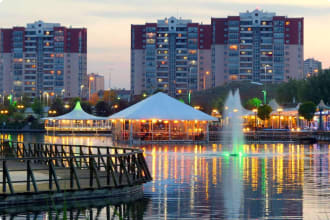
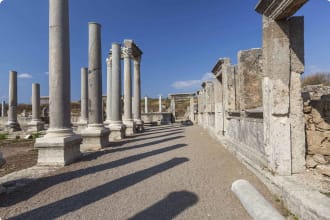

Itinerary
21 days
Day 1: Istanbul
Accommodation: 4 nights at Armada Hotel or similar
We will come to the hotel individually and have a welcome briefing on the itinerary and your Turkey trip and enjoy a welcome dinner.
(D)
Day 2: Istanbul
Accommodation: Armada Hotel or similar
Today we will take a field trip to discover the ancient world treasures of Istanbul, the sprawling metropolis where Europe and Asia collide. The city has a rich and textured history that dates back over 3000 years. Originally named Lygos, it was colonised by the Greeks in the 7th century BC, and was known as Byzantium until AD 330, when it was made the new capital of the Roman Empire and renamed Constantinople. The city grew to be the largest in the western world during late antiquity. After the Muslim conquest in 1453, Constantinople became the capital of the Ottoman Empire. It was finally renamed Istanbul when the Republic of Turkey was founded in 1923.
Our itinerary starts with an escorted tour to the Hippodrome Square, built by the Romans in the 2nd century AD as the site of horse racing and chariot racing. It was the centre of the city’s social life during the Byzantine period. We then visit the Hagia St Sophia Church, constructed by Byzantine Emperor Justinian I in 1532 and considered the pinnacle of Byzantine architecture. It was the world’s largest cathedral for over a thousand years. Over the centuries it has served as a Greek Orthodox Church, a Roman Catholic cathedral and an imperial mosque.
Finally we visit the Blue Mosque, a beautiful structure built between 1609 and 1616 by Sultan Ahmed during the Ottoman reign to house his tomb. The Mosque features six spectacular minarets, the culmination of two centuries of Ottoman empire mosque development.
We return to our hotel in time for dinner.
(B, D)
Day 3: Istanbul
Accommodation: Armada Hotel or similar
After breakfast, our tour guide will take us to the Topkapi Palace, a 15th-century structure built not long after the Muslim conquest to house the Ottoman sultans. Next, we head to the Grand Bazaar, one of the largest and oldest markets in the world. Another relic of the Ottoman Empire, the Bazaar was originally constructed as part of an initiative to stimulate economic activity in Constantinople. Its earliest trade was in textiles and jewels.
Finally, before returning to our hotel, your small group tour visits the Underground Cistern Basilica, the largest of the several hundred cisterns that lie beneath the city. Originally built in the 6th century AD, the cistern was repeatedly renovated and eventually provided water to many of the city’s grand buildings, including the Great Palace of Constantinople and the Topkapi Palace.
(B, L)
Day 4: Istanbul
Accommodation: Armada Hotel or similar
This morning we will take a cruise along the Bosphorus strait, the narrow stretch of water that connects the Black Sea to the Sea of Marmara. Along the coast there are many beautiful waterfront houses, most of which were built during the Ottoman period. The Bosphorus and the Dardanelles form the Turkish Straits, separating Asian Turkey from European Turkey. As part of the only sea route between the Black Sea and the Mediterranean, the Bosphoros straits have been commercially and militarily important for millennia. Their significance was one of the main reasons the Romans chose to build their new capital there in 330 AD. On this cruise we will view both the European and Asian shores of modern day Istanbul.
(B)
Day 5: Istanbul – Ankara
Accommodation: 2 nights at Holiday Inn Ankara or similar
This morning we leave Istanbul and we head to Ankara, the capital of Turkey, and visit the Anatolian Civilization Museum. On arrival in Ankara you will have some free time to explore the city on your own or join the local guide for a short walk. Our local tour guide will give you information regarding restaurant options in the area for dinner tonight.
Ankara was the headquarters of Kemal Ataturk’s Turkish nationalist movement, which sought to wrest control of Anatolia from the victorious Allies after the First World War. After the Turkish War of Independence, Ankara replaced Constantinople as the capital of the new Republic of Turkey. The city is divided between old and new sections. The old ancient city section features many Byzantine, Roman and Ottoman buildings.
(B, D)
Day 6: Ankara
Accommodation: Holiday Inn Ankara or similar
Today we drive to Bogazkale, the ancient civilization capital of Hittite Empire and named Hattusas. The settlement dates back over 6000 years. The Hittites established their empire in Anatolia around 1600 BC. They constructed huge fortifications around Hattusa, and our first stop is at the Lion’s Gate, one of only six passages into the ancient city. The gate gets its name from the two lions on either side of it, carved out of huge blocks of stone, and intended to scare away evil spirits from the city.
We climb up to the Tunnel King’s Gate, or ‘gate in the ground’, a 70 metre long passageway underneath the city walls, which we can walk through. We then visit the Citadel, which served as the seat of the Hittite kings. Situated at the highest point of the ancient city, it offers stunning views of the surrounding landscape. Finally, we visit the Grand Temple. Built in the 14th century BC, the temple stood as a dedication to the Hittite gods, and only rulers and priests were granted entry.
Today’s lunch is cooked by local women from the small village, with a chance to try a range of fresh genuine Turkish traditional dishes.
After lunch, for those who wish, we have a chance to visit the small local museum.
We drive back late afternoon, arriving back at the hotel in time for dinner.
(B, L)
Day 7: Ankara - Cappadocia
Accommodation: 3 nights at Yunak Cave Hotel or similar
This morning we depart for Cappadocia, a beautiful, otherworldly region of central Turkey. Before leaving Ankara we visit the Mausoleum of Kemal Ataturk.
Cappadocia was once the homeland of the Bronze Age Hittites, who knew it as Hatti. Later it was ruled by Persian kings, Romans and Ottomans. The area contains several underground cities, once used as refuges by persecuted Christians and ancient cave dwellers. However, Cappadocia’s most arresting attractions are its ‘fairy chimneys’, large rock spires that rise from the earth like mushrooms, formed over millions of years by the erosion of volcanic rock.
Before we get to our cave hotel, we stop at Saralti to visit the underground city, with 3 levels that can be visited (there are 7 in total).
We arrive at our hotel in time for dinner.
(B, L, D)
Day 8: Cappadocia
Accommodation: Yunak Cave Hotel or similar
For those who wish, there is an optional hot air balloon ride early this morning. (Additional cost. This activity is weather dependent and may not be possible at the time, please check with the tour manager).
Today we visit the Goreme Open Air Museum, a vast complex of ancient monasteries carved into the rocky landscape. Once a Byzantine monastic settlement, by the 17th century it had become an important pilgrimage site. We then head to Love Valley, euphemistically named for its distinctive rock structures. We also make a quick stop at Devrent Imagination Valley, which is home to very interesting fairy chimney formations, including one that looks like a camel.
If the group is interested, we have an optional stop at a pottery factory and shop, where you will be given a demonstration and the process from clay to the finished piece.
Lunch today is at a family-owned restaurant/home, where you will have a chance to learn about local dishes. They even have their own cookbook, available to purchase!
(B, L)
Day 9: Cappadocia
Accommodation: Yunak Cave Hotel or similar
Today we visit more breathtaking Cappadocian landscapes. After breakfast, we head to Zelve Valley, which is an open air museum with a large cave settlement. The small area has fifteen Byzantine-era cave churches and remained a Turkish village until 1960. We then move on Pasabag, where giant pillar-like fairy chimneys rise from the earth. Sometimes known as Monks Valley, its chimneys once housed hermits who sought to distance themselves from the world.
For lunch, we visit Uchisar, a natural citadel full of stairs, tunnels and passages, located at the highest point in Cappadocia. We will have lunch in a unique Fairy Chimney restaurant.
For those who are interested, we will offer you a visit to a Jewelry shop with unique and custom, handmade pieces, including the stones of Turquoise and Zultanite.
On our way back to the hotel we visit Pigeon Valley, named for the many pigeon houses carved into the rocks. Pigeons were once used in the region as message carriers, though few remain today.
Before tonight’s dinner, we head out to experience a ceremony of the Whirling Dervishes. Performed in an ancient Caravanserai that was once used along the Silk Road you will be mesmerized by the location as well as the Dervishes as they share their religious enlightening ceremony with you.
(B, L, D)
Day 10: Cappadocia - Konya
Accommodation: 1 night at Hilton Garden Inn Hotel or similar
This morning we depart for the Ihlara Gorge, a 100m deep canyon formed over thousands of years by the Melendiz River. It is estimated that around 80 000 people once lived in the Ihlara Valley. These days it is one of the best hiking spots in Turkey. We enjoy a pleasant morning walk along the valley floor next to a fast-flowing stream. We’ll enjoy a morning tea by the river. We continue on to Konya where we will enjoy lunch together and visit the Sultanhani Caravanserai, which is one of the largest and best-preserved Seljuk caravanserai in Turkey. We also visit Mevlana Museum. The museum is the mausoleum of Rumi, a 13th century Persian Sufi mystic, poet and Islamic scholar. His ‘Masnavi’, written in the city of Konya, is thought to be one the greatest poems in the Persian language.
(B, L, D)
Day 11: Konya – Antalya
Accommodation: 3 nights at Puding Hotel or similar
Today we have an early morning departure to Çatalhöyük, was a very large Neolithic and Chalcolithic proto-city settlement in southern Anatolia, which existed from approximately 7500 B.C. to 5700 B.C. It is the largest and best-preserved Neolithic site found to date. In July 2012, it was inscribed as a UNESCO World Heritage Site.
We then continue on our drive over the Taurus Mountains, where we stop for lunch, before continuing on towards the Mediterranean Coast.
We stop at the ancient city of Aspendos, another Greco-Roman stronghold in ancient Pamphylia. Aspendos is famous for having one of the best-preserved theatres of antiquity. Built in 155 AD by the Greek architect Zenon, it provided seating for up to 12,000 spectators. The city boasts a basilica and 15km of a Roman aqueduct. It was also one of the first cities to issue coins, a practice that began around 500 BC.
Dinner will be at our hotel tonight.
(B, D)
Day 12: Antalya
Accommodation: Puding Hotel or similar
This morning we have a half-day tour to Perge. This was one of the most important cities in the premodern civilization of Pamphylia. The earliest traces of continuous settlement in the city date back three millennia. After initially coming under Persian influence, the city fell to the armies of Alexander the Great in 334 BC. Its most famous resident was the Greek mathematician and astronomer Apollonius. In 188 BC Perge came under Roman rule, and rose to become one of the greatest cities in Asia Minor. The ruins of this ancient city include a theatre, a temple and a palaestra. Perge’s acropolis dates back to the Bronze Age.
We head back to Antalya for you to enjoy the rest of the afternoon free.
The leader will suggest restaurants if you want to meet up for tonight’s dinner.
(B)
Day 13: Antalya
Accommodation: Puding Hotel or similar
This morning we will walk down to Antalya’s old city marina, where we will take a leisurely half-day cruise around the local bays. There will be an opportunity to go for a swim in the beautiful blue waters of the Mediterranean. When back on dry land, we will enjoy a lunch together, before visiting the award-winning Antalya Archaeological Museum. The museum is one of the largest in Turkey, displaying over 5000 pieces of art and archaeological objects. Antalya is one of the most fertile archaeological regions in the world, will many sites boasting evidence of uninterrupted occupation from earliest man to modern times.
(B, L)
Day 14: Antalya – Pamukkale
Accommodation: 1 night at Doga Thermal Hotel or similar
This morning we depart Antalya for the world heritage site of Hierapolis-Pamukkale. Pamukkale, meaning ‘cotton castle’ in English, is a remarkable natural site famous for its dazzling thermal pools. Thick white layers of travertine and limestone cascade down the hillside, the result of the mineral-laden underground hot water springs in the area. Calcium deposits from the springs’ water created these white waterfalls over thousands of years. We visit the thermal spa of Hierapolis, established by the kings of Pergamon in the 2nd century BC.
(B, D)
Day 15: Pamukkale – Kusadasi
Accommodation: 3 nights at La Vista Hotel & Spa or similar
This morning we drive to Aphrodisias, named after Aphrodite (or Venus), the Greek goddess of love. In Roman times, Aphrodisias was famous for its sculptures and the sculptors who made them. White and blue grey marble was quarried in large quantities from the slopes around the city. The city was destroyed by a large earthquake in the 7th century.
A highlight of the visit is the stadium, which once seated over 35,000 people and is the best-preserved of its period in the world. We will also see the Hadrian Baths, erected in honour of the Roman Emperor Hadrian, who visited the city while travelling through Anatolia. Other attractions include the theatre, the Agora (Greek for ‘gathering place’ or ‘assembly’) and the Archaeological Museum – where many Aphrodite statues are on display. We arrive back at our hotel with plenty of time for dinner.
(B, D)
Day 16: Kusadasi
Accommodation: La Vista Hotel & Spa or similar
We head this morning to visit the ruins of ancient Ephesus, the cradle of early Christianity. There we visit ancient Ephesus with its terrace houses, the Archaeological Museum and the Temple of Diana/Artemis, one of the Seven Wonders of the Ancient World. We also visit the Virgin Mary’s house.
(B)
Day 17: Kusadasi
Accommodation: La Vista Hotel & Spa or similar
Today is a free day of leisure.
Previous travellers have enjoyed an optional 4-hour cooking class at a local family’s garden home. Please let the leader know if this is something you would like to sign up for.
(B, D)
Day 18: Kusadasi - Foça
Accommodation: Griffon Boutique Hotel or similar
This morning we leave Kusadasi to visit the picturesque rural Turkish village of Sirince, nested at the top of a mountain and surrounded by peach trees and vineyards. We will visit some local houses to gain an understanding of life in a typical Turkish village. We will watch the local women cooking their traditional cheese pastry and stroll through the small open-air bazaar.
In the afternoon we will drive to Foça, a small beach resort town on the Aegean Sea. You can spend the afternoon leisurely strolling around the old town, exploring its many shops.
Dinner will be at our restaurant tonight.
(B, D)
Day 19: Foça - Çanakkale
Accommodation: 1 night at DoubleTree Çanakkale or similar.
This morning we drive to Pergamon, a city built by one of the generals of Alexander the Great. We will view the Acropolis, the steepest theatre of the ancient world. We carry on to visit Asclepion, the ancient healing center. Today, it is possible to see the ruins of the ancient healing center and view the sites used for techniques such as Sacred Water, Herbs and Ointments, the Sun Bath, the Theatre for Music, and those used for social events. We are invited to a homemade, local lunch in a villager’s house in Demircidere Village; an authentic experience of the everyday life of a Turkish family.
We then carry on to ancient Troy where we will take in its legendary sights and view the replica of the wooden horse. Troy was the setting for the Trojan War, described in Homer’s Iliad.
We arrive at our Çanakkale hotel in time for dinner.
(B, L, D)
Day 20: Canakkale – Istanbul
Accommodation: 1 night at Armada Hotel or similar
From our hotel in Canakkale we board a ferryboat to cross the Dardanelles Straits. From here we head to the Gallipoli (Gelibolu) Peninsula and ANZAC Cove, the site of the epic eight-month military confrontation during the First World War. Following the shoreline of the Sea of Marmara, we arrive back in cosmopolitan Istanbul. Tonight we come together for our farewell dinner.
(B, D)
Day 21: Istanbul
The tour ends after breakfast.
(B)
Tour Notes
- Itineraries may change if flight schedules, site availability, and other inclusions have to be amended prior to departure.
- Group size limited to 16.
Includes / Excludes
What’s included in our Tour
- 20 of nights hotel accommodation.
- 20 breakfasts, 8 lunches, and 13 dinners.
- All sightseeing and field trips as indicated.
- Applicable entry fees and services of local guides.
- Touring by comfortable and modern coach.
- Service charges and gratuities.
- Services of a Tour Leader for the duration of the tour.
- Detailed tour information booklet.
What’s not included in our Tour
- International airfares and departure taxes.
- Comprehensive travel insurance.
- Optional excursions such (i.e. Hot air balloon ride)
- Items of a personal nature such as telephone calls and laundry.
- Visa fees and visa assistance service.
Book now
Make it a private tour
Easing your journey
Crossing international borders with restrictions
The list of requirements to travel internationally has changed and will continue to change for several years. Odyssey is here to assist you in managing your way through these requirements:
For more information see our Crossing international borders with restrictions page.
Book With Confidence
If less than 30 days before your tour starts you are unable to travel as a result of Government travel restrictions, Odyssey Traveller will assist you with a date change, provide you with a credit or process a refund for your booking less any non-recoverable costs.
See Terms and conditions for details.
Peace of Mind Travel
The safety of our travellers, tour leader, local guide and support staff has always been our top priority and with the new guidelines for public health and safety for keeping safe for destinations around the world, we’ve developed our plan to give you peace of mind when travelling with us.
See Peace of Mind Travel for details.
Reviews
Trip of a lifetime, met some great people. Don’t let solo traveling keep you home. It was great! Ty Odysseytraveller Jo G. Apr '23
If you are interested in history, and exploring new places in a small group setting, this is the tour for you. Turkey is a large and fascinating country and Odyssey led us through its history from the Stone Age to World War I, ending at Gallipoli. It was a great trip. Pat G. Apr '23
Very comprehensive tour of the historical sites of Turkey with a great guide and tour leader, the minibus made it easy to get to quite remote sights and we were well-fed, hotels comfortable and ultimately it was a lot of fun. Sally C. Sep '19
Excellent & varied itinerary - a great introduction to a wonderfully interesting country. Heather M. May '19
Travelling in Turkey with Odyssey was such a good experience although I had never joined a group before. This was very small - only 6 - so I felt very fortunate that Odyssey guaranteed our departure and arranged for an archaeologist from Australia and a wonderful Turkish guide. i could happily do it all again! Ruth B. Sep '18
My previous knowledge of Turkey was minimal and influenced by Western media and attitudes. My eyes have been opened to see a country of rich culture and warm and generous people. Christie B. Sep '18
Cradle of Civilisations was a fairly fast-paced tour which covered many of the must-see places in north western part of the country. I felt awed by the places themselves, the depth of history on view at some of the places we visited. This was complimented hugely by the knowledge of our Local Guide, Filiz, and the Program Leader, Michael Bendon. To stand in places where thousands of years of human habitation had taken place was phenomenal. As well, the evidence of Turkey as a crucial part of the growth of western civilisation as seen in the Hittite, Roman and Christian sites and the evidence of a vast, centuries old, trading network was just awe inspiring. Agnes H. Sep '18
We felt safe in Turkey and found the people friendly and helpful. Prices were excellent and the food almost universally magnificent. There is so much to see in the natural and built environment and the wonderful archaeological sites. It is sad to see the ordinary people and businesses suffering from the lack of tourists. Mary B. Sep '17
Participant 2017
The country was apparently calm and safe. People were friendly and helpful. Such a pity there has been such a down turn in tourism. Ros & Tony S. Sep '17
Participant 2017
Our guide Filiz was wonderful, very well informed, historical insights very helpful, her care for our well being exceptional. Could not have wished for a better tour leader.
Participant 2017
Reading List Download PDF
A Peace to End All Peace: The Fall of the Ottoman Empire and the Creation of the Modern Middle East
David Fromkin
The Middle East has long been a region of rival religions, ideologies, nationalisms, and ambitions. All of these conflicts―including the hostilities between Arabs and Israelis, and the violent challenges posed by Iraq's competing sects―are rooted in the region's political inheritance: the arrangements, unities, and divisions imposed by the Allies after the First World War.
In A Peace to End All Peace, David Fromkin reveals how and why the Allies drew lines on an empty map that remade the geography and politics of the Middle East. Focusing on the formative years of 1914 to 1922, when all seemed possible, he delivers in this sweeping and magisterial book the definitive account of this defining time, showing how the choices narrowed and the Middle East began along a road that led to the conflicts and confusion that continue to this day.
A new afterword from Fromkin, written for this edition of the book, includes his invaluable, updated assessment of this region of the world today, and on what this history has to teach us.
Turkey Unveiled: A History of Modern Turkey
Nicole and Hugh Pope
In this "deeply revealing guide to modern Turkish culture and politics"(The New York Times Book Review), Hugh and Nicole Pope provide a glimpse into a culture that has long been misunderstood. Turkey Unveiled is the only book in many years to attempt to fill a gap in perception with regard to this extremely complex country, and this paperback edition includes an epilogue that brings the book totally up to date, with coverage of the most recent developments in Turkey.
Throughout the last generation Turkey has opened up to the outside world, increasingly revealing a pluralistic and dynamic society. The authors, who speak fluent Turkish and have reported from Turkey for over a decade, provide a rich mosaic of contemporary Turkey and its formative past. The strengths and weaknesses of the Ottoman Empire, the Armenian tragedy, the ongoing Kurdish struggle, and the controversial legacy of the brilliant but autocratic founder of modern Turkey, Mustafa Kemal Ataturk, are all here. They also provide portraits of new leaders who have broken taboos and ushered in new freedoms at a time when other forces attempt to pull Turkey back into the Middle Eastern vortex. Hugh and Nicole Pope, combining analysis with understanding, make recent developments in Turkey intelligible for both the general reader and the millions of visitors welcomed by a burgeoning tourist industry.
The Fall of the Ottomans: The Great War in the Middle East
Eugene Rogan
By 1914 the powers of Europe were sliding inexorably toward war, and they pulled the Middle East along with them into one of the most destructive conflicts in human history. In The Fall of the Ottomans, award-winning historian Eugene Rogan brings the First World War and its immediate aftermath in the Middle East to vivid life, uncovering the often ignored story of the region’s crucial role in the conflict. Unlike the static killing fields of the Western Front, the war in the Middle East was fast-moving and unpredictable, with the Turks inflicting decisive defeats on the Entente in Gallipoli, Mesopotamia, and Gaza before the tide of battle turned in the Allies’ favor. The postwar settlement led to the partition of Ottoman lands, laying the groundwork for the ongoing conflicts that continue to plague the modern Arab world. A sweeping narrative of battles and political intrigue from Gallipoli to Arabia, The Fall of the Ottomans is essential reading for anyone seeking to understand the Great War and the making of the modern Middle East.
Turkey: A Short History
Norman Stone
In Turkey: A Short History the celebrated historian Norman Stone deftly conducts the reader through the fascinating and complex story of Turkey’s past, from the arrival of the Seljuks in Anatolia in the eleventh century to the modern republic applying for EU membership in the twenty-first. It is an account of epic proportions, featuring rapacious leaders such as Genghis Khan and Tamerlane, the glories of Sultan Süleyman the Magnificent, and Kemal Atatürk, the reforming genius and founder of modern Turkey.
For six hundred years Turkey was at the heart of the Ottoman Empire, a superpower that brought Islam to the gates of Vienna and stretched to North Africa, the Persian Gulf, and the river Volga. Stone examines the reasons for the astonishing rise and the long decline of this world empire and how for its last hundred years it became the center of the Eastern Question, as the Great Powers argued over a regime in its death throes. Then, as now, the position of Turkey—a country balanced between two continents—provoked passionate debate. Stone concludes the book with a trenchant examination of the Turkish republic created in the aftermath of the First World War, where East and West, religion and secularism, and tradition and modernization are vibrant and sometimes conflicting elements of national identity. 11 illustrations
A Traveller's History of Turkey
Richard Stoneman
Throughout the millennia Turkey formed the core of several Empires--Persia, Rome, Byzantium--before becoming the center of the Ottoman Empire. All these civilizations have left their marks on the landscape, architecture and art of Turkey--a place of fascinating overlapping cultures.
A Traveller's History of Turkey offers a concise and readable account of the region from prehistory right up to the present day. It covers everything from the legendary Flood of Noah, the early civilization of Catal Huyuk seven thousand years before Christ, through the treasures of Troy, Alexander the Great, the Romans, Seljuks, Byzantines and the Golden Age of the Sultans, to the twentieth century's great changes wrought by Kemal Ataturk and the strong position Turkey now holds in the world community.
Birds Without Wings
Louis de Bernieres
In his first novel since Captain Corelli's Mandolin, Louis de Bernieres recreates a world, populates it with characters as real as our best friends, and launches it into the maelstrom of twentieth-century history. The setting is a small village in southwestern Anatolia in the waning years of the Ottoman Empire. Everyone there speaks Turkish, though they write it in Greek letters. It is a place that has room for a professional blasphemer; where a brokenhearted aga finds solace in the arms of a Circassian courtesan who isn't Circassian at all; where a beautiful Christian girl named Philothei is engaged to a Muslim boy named Ibrahim. But all of this will change when Turkey enters the modern world. Epic in sweep, intoxicating in its sensual detail, Birds Without Wings is an enchantment. de Bernieres insists it exceeds its better-known predecessor. Discover for yourself.
The Guardian called it "a Turkish take on War and Peace". Read their interview with Bernieres here.
The Silk Road in World History
Xinru Liu
The Silk Road was the contemporary name for a complex of ancient trade routes linking East Asia with Central Asia, South Asia, and the Mediterranean world. This network of exchange emerged along the borders between agricultural China and the steppe nomads during the Han Dynasty (206 B.C.E.-220 C.E.), in consequence of the inter-dependence and the conflicts of these two distinctive societies. In their quest for horses, fragrances, spices, gems, glassware, and other exotics from the lands to their west, the Han Empire extended its dominion over the oases around the Takla Makan Desert and sent silk all the way to the Mediterranean, either through the land routes leading to the caravan city of Palmyra in Syria desert, or by way of northwest India, the Arabian Sea and the Red Sea, landing at Alexandria. The Silk Road survived the turmoil of the demise of the Han and Roman Empires, reached its golden age during the early middle age, when the Byzantine Empire and the Tang Empire became centres of silk culture and established the models for high culture of the Eurasian world. The coming of Islam extended silk culture to an even larger area and paved the way for an expanded market for textiles and other commodities. By the 11th century, however, the Silk Road was in decline because of intense competition from the sea routes of the Indian Ocean. Using supply and demand as the framework for analysing the formation and development of the Silk Road, the book examines the dynamics of the interactions of the nomadic pastoralists with sedentary agriculturalists, and the spread of new ideas, religions, and values into the world of commerce, thus illustrating the cultural forces underlying material transactions. This effort at tracing the interconnections of the diverse participants in the transcontinental Silk Road exchange will demonstrate that the world had been linked through economic and ideological forces long before the modern era.
Istanbul: A Poetry of Place
Ates Orga (ed.)
My Name is Red
Orhan Pamuk (trans. Erdag M. Goknar)
At once a fiendishly devious mystery, a beguiling love story, and a brilliant symposium on the power of art, My Name Is Red is a transporting tale set amid the splendor and religious intrigue of sixteenth-century Istanbul, from one of the most prominent contemporary Turkish writers. (Pamuk was awarded the Novel Prize in Literature in 2006).
The Sultan has commissioned a cadre of the most acclaimed artists in the land to create a great book celebrating the glories of his realm. Their task: to illuminate the work in the European style. But because figurative art can be deemed an affront to Islam, this commission is a dangerous proposition indeed. The ruling elite therefore mustn’t know the full scope or nature of the project, and panic erupts when one of the chosen miniaturists disappears. The only clue to the mystery–or crime? –lies in the half-finished illuminations themselves. Part fantasy and part philosophical puzzle, My Name is Red is a kaleidoscopic journey to the intersection of art, religion, love, sex and power.
Rebel Land
Christopher de Bellaigue
In 2001, Christopher de Bellaigue wrote a story for The New York Review of Books, in which he briefly discussed the killing and deportation of half a million Armenians from Turkey in 1915. These massacres, he suggested, were best understood as part of the struggles that attended the end of the Ottoman Empire. Upon publication, the Review was besieged with letters asserting that this was not war but genocide. How had he gotten it so wrong? De Bellaigue set out for Turkey's troubled southeast to discover what really happened. What emerged is both an intellectual detective story and a reckoning with memory and identity. Rebel Land unravels the enigma of the Turkish twentieth century―a time that contains the death of an empire, the founding of a nation, and the near extinction of a people.
Turkish author and Nobel laureate Orhan Pamuk calls it "A finely written, brave, and very personal book"
